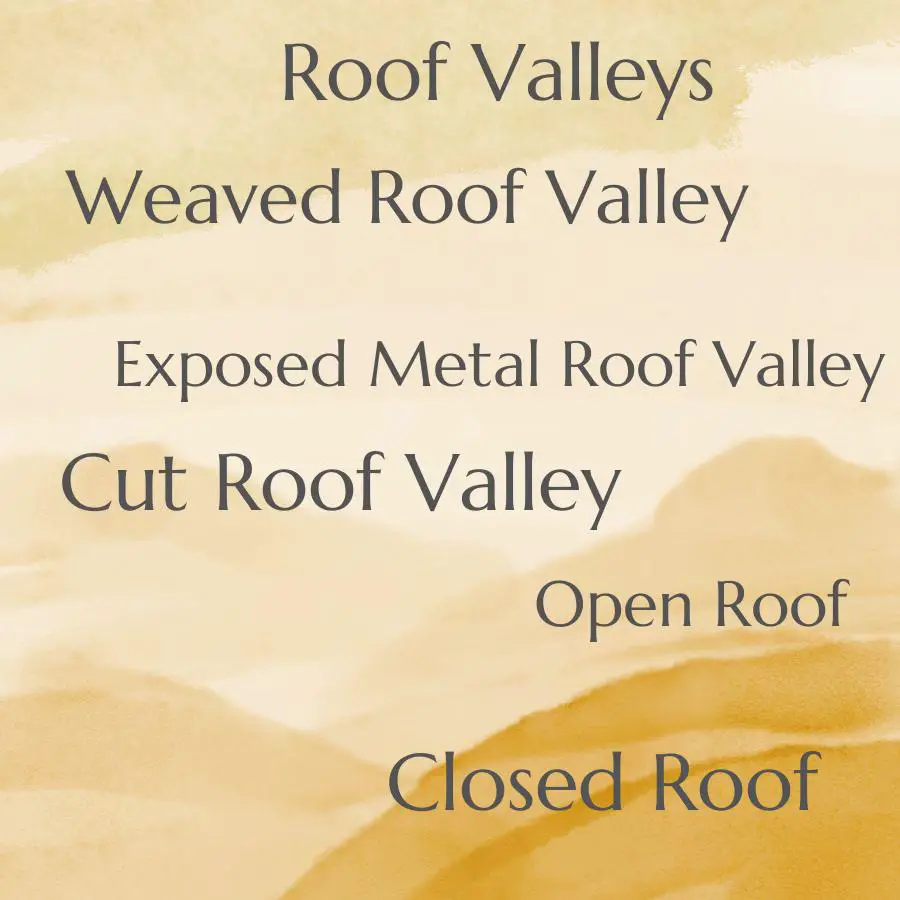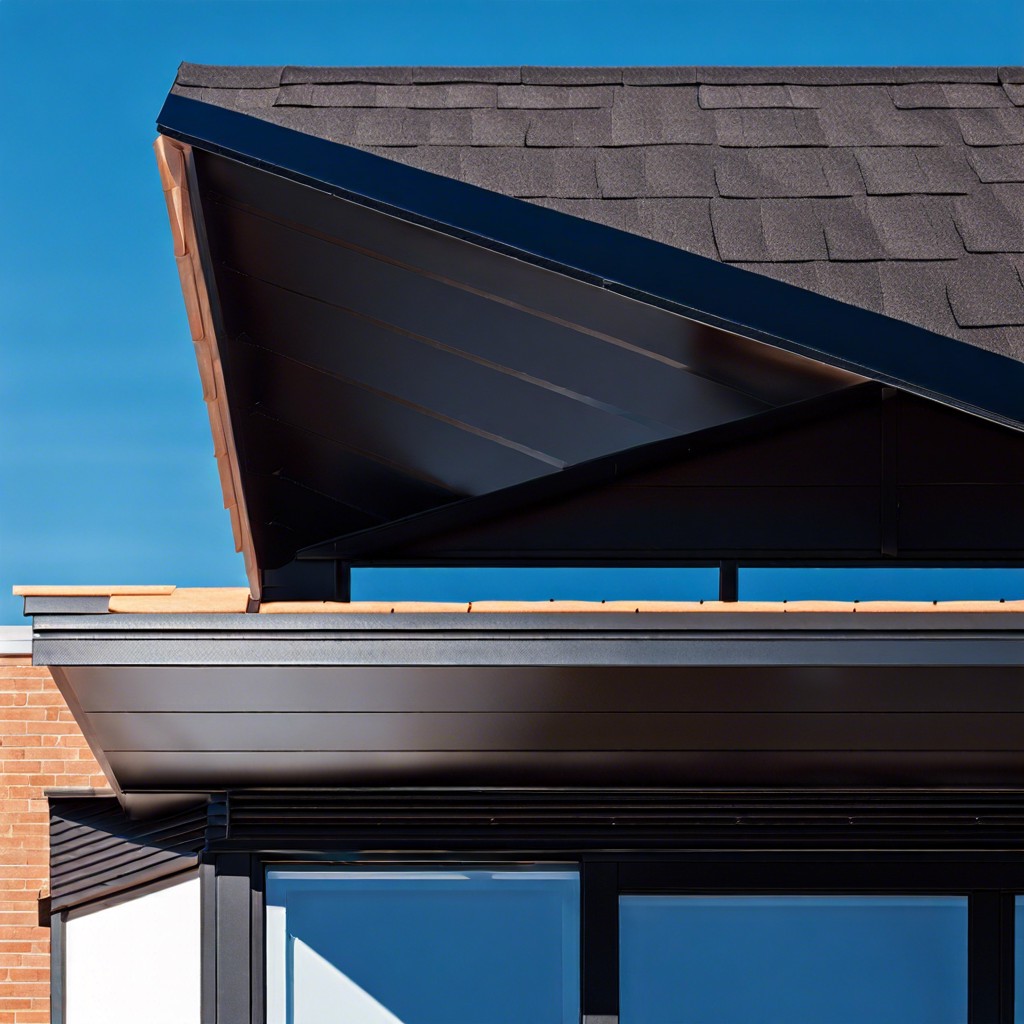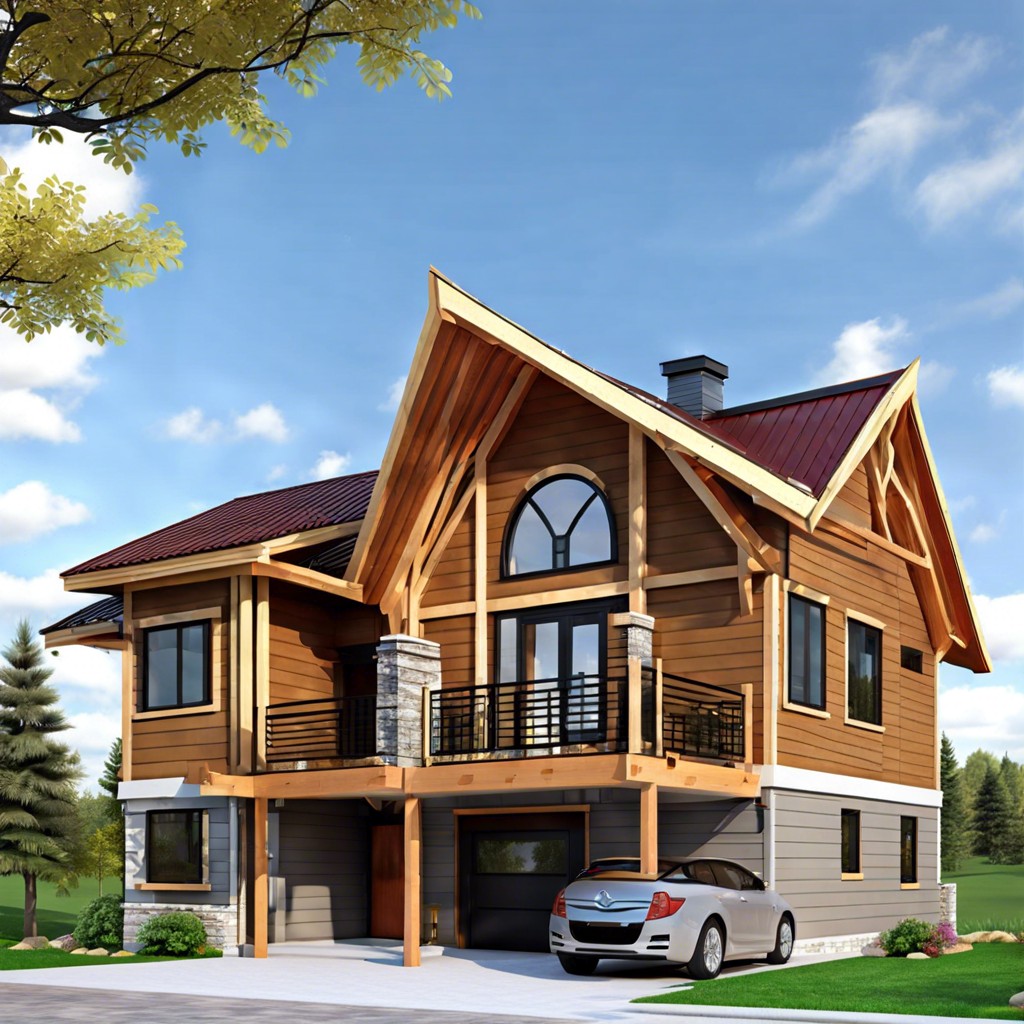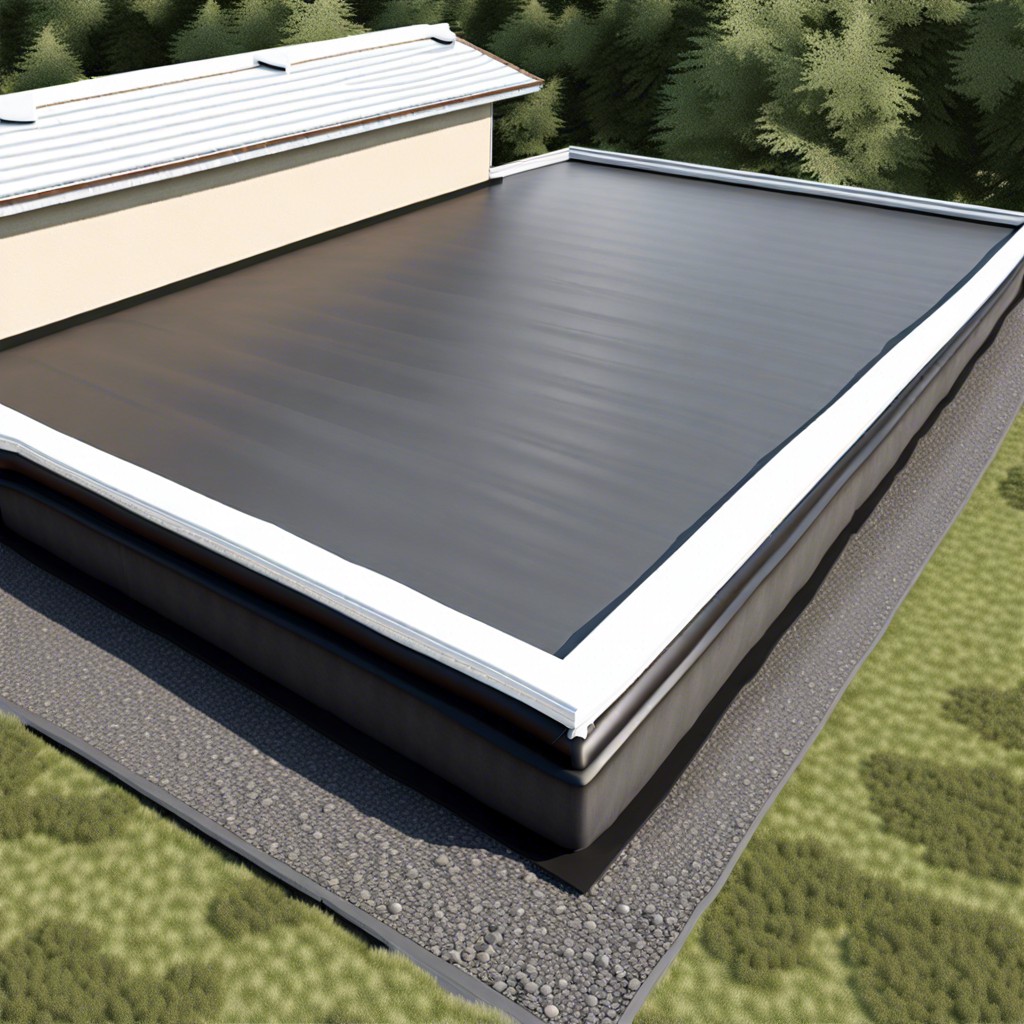Last updated on
Explore the various types of roof valleys in this informative blog post, as we delve into their unique features and benefits for protecting your home from water damage.
Roof valleys are an essential part of any roofing system. They are the areas where two sloping roofs meet, and water flows down towards the gutters.
Without proper installation and maintenance, roof valleys can become a source of leaks and other problems. But did you know that there are different types of roof valleys? Each type has its own advantages and disadvantages, so it’s crucial to choose the right one for your roofing needs.
In this article, we’ll take a closer look at the various types of roof valleys to help you make an informed decision when it comes to your roofing project. So let’s get started!
Closed Roof Valleys

They are also known as “closed-cut” or “laced” valleys and provide a clean, streamlined look to your roofing system. In this type of valley, shingles from one side overlap the other side’s shingles, creating a continuous surface that directs water towards the gutters.
One advantage of closed roof valleys is that they offer better protection against leaks compared to open valley systems. The overlapping design ensures that water flows smoothly down towards the gutter without seeping through any gaps in between.
Another benefit is their durability; closed roof valleys can withstand harsh weather conditions such as heavy rain and snowfall without getting damaged easily.
However, installing closed-valleys requires more time and effort than other types due to its intricate design. It also requires skilled laborers who have experience with this type of installation method.
Open Roof Valleys
Unlike closed roof valleys, open roof valleys do not have shingles or other materials covering the valley area. Instead, they rely on a metal lining to protect against water damage.
One advantage of open roof valleys is that they allow for better ventilation and airflow in your attic space. This can help regulate temperature and prevent moisture buildup, which can lead to mold growth and other issues.
However, it’s important to note that open roof valleys require proper installation and maintenance to ensure their effectiveness. The metal lining must be securely fastened and sealed at all joints to prevent leaks from occurring.
When considering an open roof valley for your home’s roofing system, it’s essential to consult with a professional roofer who has experience working with this type of design. They can provide guidance on whether an open or closed valley would be best suited for your specific needs based on factors such as climate conditions and the slope of your existing roofing system.
Cut Roof Valley
This technique is commonly used in asphalt shingle roofing systems and provides an aesthetically pleasing look while also ensuring proper water flow.
The cut roof valley method involves installing two separate pieces of flashing on either side of the valley. The first piece is installed under the shingles on one side, and then it’s cut along the centerline using a specialized tool called a roofing knife.
The second piece is then installed over this cut edge, creating an overlap that helps prevent water from seeping through.
One advantage of using this method for your roof valleys is its durability; it can withstand harsh weather conditions such as heavy rain or snowfall without causing any damage to your home’s interior structure. Cut Roof Valleys are relatively easy to install compared to other types like Weaved or Woven Roof Valleys.
Weaved Roof Valley
This technique creates a seamless look and provides excellent protection against water damage. Weaving the shingles also makes it easier to maintain and repair, as you can replace individual shingles without having to remove an entire section.
One downside of this type of valley is that it requires more time and skill to install than other types, which may increase labor costs. However, if done correctly by an experienced roofer, a weaved roof valley can last for many years with minimal maintenance.
When considering what type of roofing material to use for your weaved roof valleys, asphalt shingles are often recommended due to their flexibility in conforming around corners and edges. Metal roofing materials such as copper or aluminum can also be used but require special installation techniques.
Exposed Metal Roof Valley
This type of valley is commonly used in commercial buildings and modern homes due to its durability and sleek appearance. The exposed metal creates a clean, contemporary look that complements many architectural styles.
One advantage of an Exposed Metal Roof Valley is its resistance to weathering, which makes it ideal for areas with harsh climates or high rainfall. It also requires minimal maintenance compared to other types of valleys since it doesn’t require regular cleaning or sealing.
However, one downside to this type of valley is that it can be noisy during heavy rainfalls due to the sound created by water hitting against the metal surface. If not installed correctly with proper flashing materials and profile design, exposed metal roof valleys can be prone to leaks.
Woven Roof Valley
This technique creates a seamless and aesthetically pleasing look, making it an excellent choice for homeowners who want to enhance their home’s curb appeal.
One advantage of using this method is that it provides better protection against water damage than other types of valleys. The interlocking shingles create a barrier that prevents water from seeping through the gaps between them.
However, installing a woven roof valley requires more time and effort than other types because each shingle must be carefully placed and secured in place. It also requires skilled labor to ensure proper installation.
If you’re considering using this type of roofing system, make sure to hire experienced professionals who have worked with woven valleys before.
Closed-Cut Roof Valley
It’s also known as the “California Cut” because it was first developed in California to deal with the state’s unique weather conditions. This type of valley involves cutting a groove into both sides of the roofing material, and then overlapping them so that they form a closed channel for water to flow through.
One advantage of this design is that it provides extra protection against leaks, as there are no exposed edges where water can seep through. Closed-cut valleys have an aesthetically pleasing appearance since they create clean lines on your roof.
However, installing this type of valley requires more time and effort than other types due to its intricate design. It also requires skilled laborers who know how to cut precise grooves into roofing materials without damaging them.
California Roof Valley
This design allows for better ventilation and helps to prevent the buildup of debris, which can lead to water damage.
Unlike closed or cut roof valleys, the California style does not require any metal flashing. Instead, shingles are woven together at the point where two sloping roofs meet.
This creates a natural channel for water to flow down towards the gutters.
One advantage of this type of valley is that it can be more aesthetically pleasing than other types since there are no visible metal components. However, it’s important to note that proper installation and maintenance are crucial for ensuring its effectiveness in preventing leaks and protecting your home from water damage.
Open Roof Valley (With Metal Lining)
This design involves using metal flashing to line the valley, which provides extra protection against water damage. The metal lining can be made from various materials such as copper, aluminum or steel.
One advantage of an open roof valley with a metal lining is that it allows for better ventilation and air flow in your attic space. This can help prevent moisture buildup and reduce the risk of mold growth.
However, this type of roofing system requires proper installation by an experienced professional to ensure that there are no gaps or holes where water could seep through. It’s also important to regularly inspect and maintain the metal flashing to prevent rusting or corrosion over time.
Considering the Relevance
That’s why considering the relevance of each component is crucial in ensuring that your roof performs its best and lasts for years to come. Roof valleys are no exception.
Roof valleys play a critical role in directing water away from your home’s foundation and preventing leaks. Choosing the right type of valley for your roof can make all the difference when it comes to protecting your home from water damage.
Factors such as climate, slope, and roofing material should be taken into account when selecting a valley type. For example, closed-cut roof valleys are ideal for areas with heavy rainfall or snowfall because they provide extra protection against moisture penetration.
Understanding how different materials perform in various weather conditions can help you choose the best option for longevity and durability. Copper is an excellent choice due to its resistance against corrosion while aluminum offers affordability without sacrificing quality.
Which Roof Valley Type Is Best?
The most important factor is the climate in your area. If you live in an area with heavy rainfall or snowfall, a closed-cut roof valley may be the best option as it provides better protection against water damage.
Another consideration is the style of your home and personal preference. Open roof valleys can add a unique design element to certain styles of homes while closed valleys provide a more traditional look.
It’s also essential to choose high-quality materials for your roofing system, including flashing materials used on valleys. Copper and aluminum are popular choices due to their durability and resistance against corrosion.
What Is the Purpose of a Valley On a Roof?
Without valleys, water would accumulate on the roof and eventually seep through any cracks or gaps in the roofing material. This can lead to leaks, mold growth, and other costly problems.
Roof valleys also play an important role in maintaining proper ventilation for your attic space. By directing air flow towards vents located at either end of the ridge line (the highest point on a sloping roof), they help prevent moisture buildup that can cause rotting wood or insulation.
Different types of roofs require different types of valleys depending on their slope angle and design features. For example, closed-cut valleys are ideal for steeply pitched roofs with shingles while open metal-lined ones work well with low-slope roofs made from materials like asphalt roll roofing.
Roof Valley Flashing Materials
It helps to prevent water from seeping into the roof’s interior and causing damage. Flashing materials are used to create a watertight seal between the roof valley and adjacent surfaces, such as walls or chimneys.
There are several types of flashing materials that can be used for roof valleys, including:.
1. Aluminum: This is one of the most popular choices for roof valley flashing due to its durability and affordability.
2. Copper: While more expensive than aluminum, copper has excellent corrosion resistance properties that make it ideal for use in areas with high moisture levels.
3. Steel: Galvanized steel is another option for roof valley flashing but may not be suitable in areas with high salt content or acidic rainwater runoff.
4. Lead-coated copper: This material combines the benefits of both lead and copper by providing superior protection against weathering while also being malleable enough to conform easily around corners and edges.
Roof Valley Flashing Profile
It refers to the shape and design of the metal sheet used to cover the valley area. The most common types of flashing profiles are V-shaped, W-shaped, and straight.
V-shaped flashings are ideal for closed valleys because they provide a smooth surface for water runoff while preventing debris from accumulating in between shingles. W-shaped flashings work best with open valleys as they allow more space for water flow and can accommodate larger amounts of debris without clogging up.
Straight flashings are typically used in California-style valleys where there is no overlap between shingles on either side. They create a clean look that complements modern architectural designs.
When choosing your roofing material, it’s crucial to consider not only its durability but also its compatibility with your chosen flashing profile. A mismatched combination could lead to leaks or other issues down the line.
Understanding different roof valley flashing profiles will help you make informed decisions when it comes time to install or repair your roofing system’s valleys properly.
Keeping Your Roof Valley in Good Condition
Regular maintenance can help prevent leaks and other issues that may arise from damaged or clogged valleys.
One way to maintain your roof valley is by keeping it clean and free of debris such as leaves, twigs, and dirt. These materials can accumulate over time and block water flow through the valley.
Another crucial aspect of maintaining your roof valley is ensuring proper installation. If not installed correctly, a poorly constructed valley could lead to water damage inside your home.
It’s also important to inspect your roof regularly for any signs of wear or tear on the shingles around the valleys. Damaged shingles should be replaced promptly before they cause further problems with water infiltration into your home.
Taking care of your roofing system includes paying attention to its valleys’ condition since they play an integral role in protecting against moisture damage. By following these simple tips for maintaining a healthy roofing system with well-maintained valleys will ensure long-lasting protection for years ahead!
Why Focus On Your Roof’s Valleys?
Neglecting your roof valleys can lead to water damage, leaks, and other issues that can be costly to repair. Water tends to accumulate in the valley areas due to their sloping design, making them more susceptible than other parts of the roof.
Focusing on your roof’s valleys means ensuring they are properly installed with adequate flashing materials such as metal or rubber membranes that prevent water from seeping through gaps between shingles or tiles. It also involves regular inspection for signs of wear and tear such as cracks or missing pieces which could compromise their effectiveness.
By paying attention to your roof’s valleys, you’ll not only protect your home from potential water damage but also extend the lifespan of your roofing system by preventing premature deterioration caused by moisture buildup in these critical areas.
FAQ
What are the different types of roof valleys?
Answer: The three main types of roof valleys are cut, weaved, and exposed metal, each differing in central characteristics.
What is best for roof valleys?
The best material for roof valleys is prefinished steel or copper, ensuring proper installation for no problems.
What are the different types of closed valleys?
Answer: The two types of closed valleys are cut valleys, which are less expensive and more common, and woven valleys.
What are the advantages and disadvantages of open vs. closed roof valleys?
Open roof valleys offer easier maintenance and better water drainage, while closed roof valleys provide a more streamlined appearance and better protection against debris accumulation.
How do the materials used in roof valleys affect their performance and longevity?
The materials used in roof valleys, such as copper, aluminum, and metal, significantly impact their performance and longevity due to factors like durability, corrosion resistance, and proper installation.
What is the recommended maintenance for various types of roof valleys?
Recommended maintenance for various types of roof valleys includes regular inspection, cleaning of debris, checking for damage, and ensuring proper water flow.




